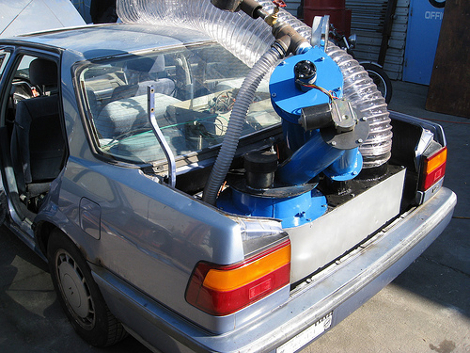
There is more carbon dioxide (CO2) in the atmosphere these days than ever before in human history, and while it would be marvelous to use these carbon atoms for something more useful, capturing CO2 directly from the air isn’t that easy. After capturing it would also be great if you could do something more with it than stuff it into a big hole. Something like producing syngas (CO + H2) for example, as demonstrated by researchers at the University of Cambridge.
Among the improvements claimed in the paper as published in Nature Energy for this direct air capture and utilization (DACCU) approach are that it does not require pure CO2 feedstock, but will adsorb it directly from the air passing over a bed of solid silica-amine. After adsorption, the CO2 can be released again by exposure to concentrated light. Following this the conversion to syngas is accomplished by passing it over a second bed consisting of silica/alumina-titania-cobalt bis(terpyridine), that acts as a photocatalyst.
The envisioned usage scenario would be CO2 adsorption during the night, with concentrated solar power releasing it the day with subsequent production of syngas. Inlet air would be passed only over the adsorption section before switching the inlet off during the syngas generating phase. As a lab proof-of-concept it seems to work well, with outlet air stripped from virtually all CO2 and very high conversion ratio from CO2 to syngas.
Syngas has historically been used as a replacement for gasoline, but is also used as a source of hydrogen (e.g. steam reformation (SMR) of natural gas) where it’s used for reduction of iron ore, as well as the production of methanol as a precursor to many industrial processes. Whether this DACCU approach provides a viable alternative to SMR and other existing technologies will become clear once this technology moves from the lab into the real world.
Thanks to [Dan] for the tip.














